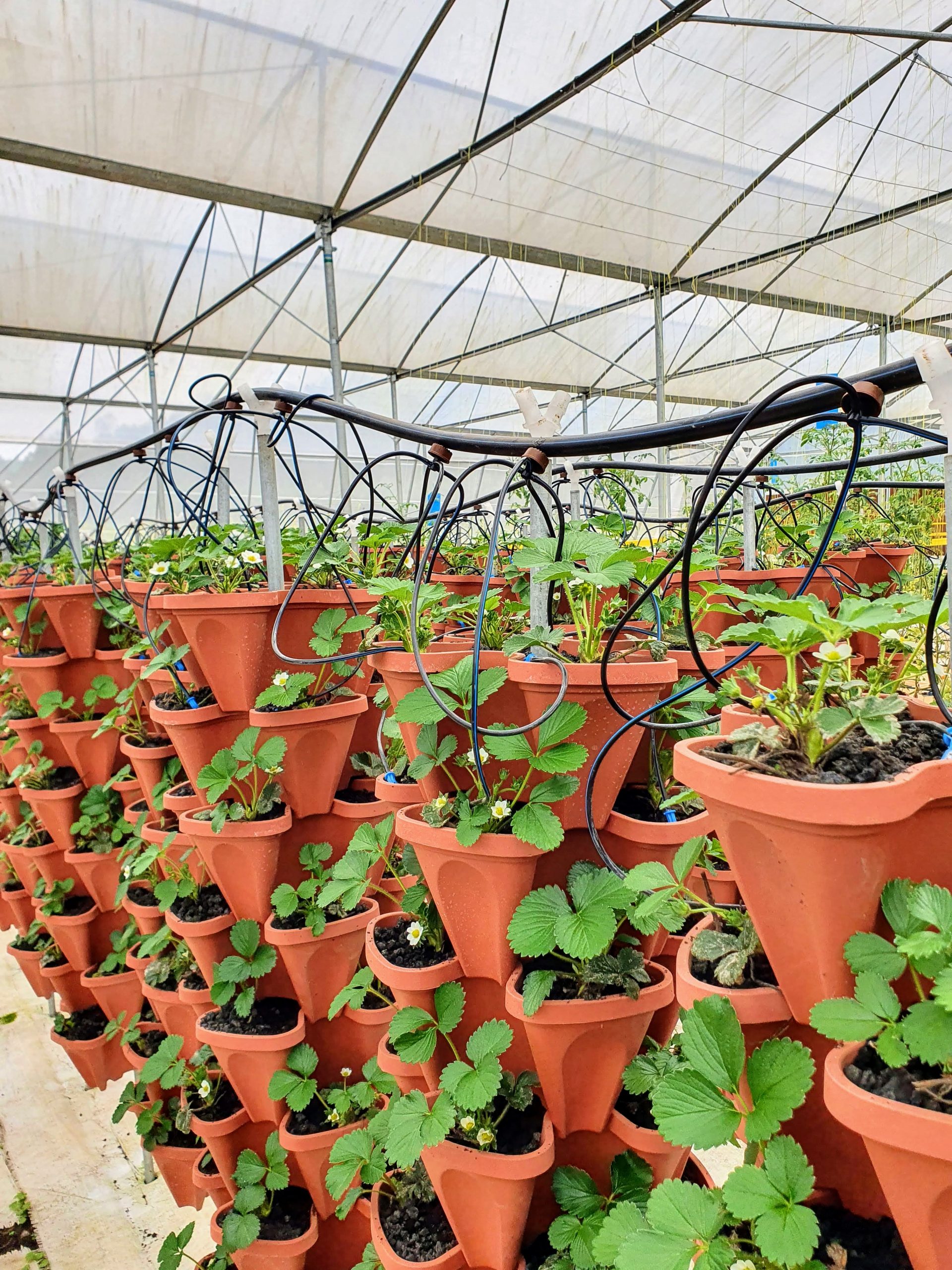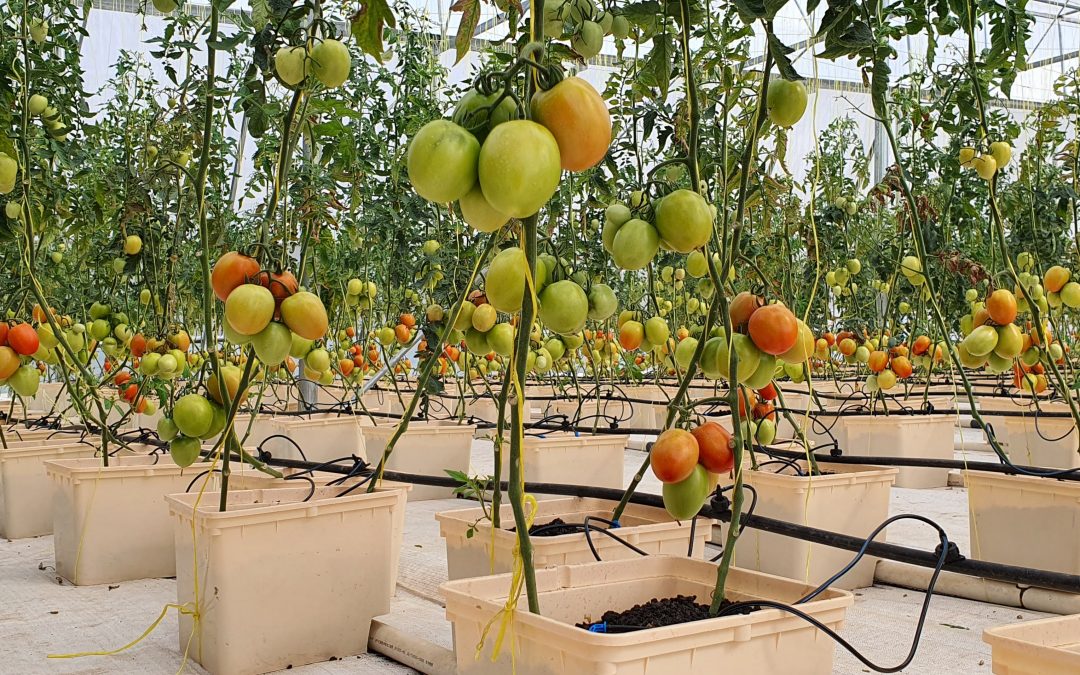Why hydroponics? Well first, what is hydroponics? Hydroponics is a type of horticulture which involves growing plants without the use of soil and using nutrient solutions to feed your plants. Why grow without soil in the first place?
Advantages:
1. You save a lot of water and fertilizer. Agriculture uses up to 70% of freshwater globally. In addition to this 60% of fertilizer that is irrigated is not absorbed by the plant and is washed away. This kind of waste negatively impacts the environment as fertilizers pollute natural water sources. In contrast, in hydroponics, the nutrients are fed directly to the plant roots minimizing waste. Because of this, you can use up to 10% of the water that is usually required in traditional agriculture and consequently also reduce your fertilizer usage if you recirculate the water. This leads to fewer operating costs, less waste and a more eco-friendly way of farming.
2. Another advantage to growing without soil, is that you could grow almost anywhere by converting any terrain to farmland. This is particularly, relevant especially in the Rwandan Horticulture sector because even though our total horticulture production is gradually increasing as we use more land to grow our food, our productivity per hectare for certain crops is slowly decreasing due to declining soil fertility. Unless we replenish our soil faster than we are using it, this will potentially pose a serious threat to our crop yields. In addition to this, we lose millions of tons of top soil every year due to soil erosion from rain, inadequate farming practices, and our hilly terrains. Hydroponics offers an alternative way of farming that can help mitigate these challenges in order to maintain and improve our productivity.
3. Hydroponics also helps avoid soil-borne diseases and pests. Since most fungi and infectious agents are soilborne, growing vegetables hydroponically reduces exposure to such risk. In addition to this, most hydroponic production is grown indoors which protects plants against pests and reduces the reliance on harmful pesticides and insecticides.
4. Hydroponics is also a highly scalable method of farming. You can incorporate vertical farming and save space. This can allow places like Rwanda with limited land space to still be highly productive. For example, in our greenhouse, we are growing up to 38-39 strawberries per square meter, more than 5 times the efficiency in open field thanks to vertical farming. This kind of efficiency is what is needed in order to maximize our land use and achieve our horticulture productivity goals.
Vertical Farming Hydroponic Strawberries

5. Hydroponics is a great way to start small. In contrast to big commercial operations, hydroponics is also great way to practice on a small scale because it can be a convenient way for a hobbyist who does not have time or room for soil gardening to grow. A hydroponics unit can be installed anywhere that there is sunlight or even be installed indoors with supplemental lighting growing anything from flowers, herbs, leafy greens like lettuce, and fruits like strawberries.
Even though hydroponics is a convenient and sustainable method of farming with lots of advantages, it also comes with its many challenges. It isn’t a silver bullet and for some may not be the best option to pursue. I personally have faced and still facing certain challenges even though the benefits have outweighed the constraints.
Disadvantages:
1. More expensive capital costs to set up compared to traditional agriculture. The higher capital costs and technical know-how required to set up a commercial hydroponics operation can be a hurdle for some. In the long run, however, due to higher efficiency the operating costs, can be less than traditional open-field agriculture and making up for the high initial capital costs.
2. Hydroponics requires constant monitoring and maintenance. Soil is not only is a source of nutrients for the plant but it also acts as a buffer. Farming without it requires a higher level of monitoring and micro-managing of plant requirements. If done well this can lead to tremendous results with yields that are superior to traditional farming. However if not done well, it can also lead to subpar performance due to many points of failure. Such a high level of maintenance can be challenging especially for inexperienced farmers.
So why hydroponics? Well, why not? Despite the challenges, there are even greater advantages and opportunities. This is what has pushed us to embark on this journey with the help of some great partners. A little over a year ago, we got the chance to work with SNV in the Hortinvest Program to set up a hydroponics and vertical farming operation as an innovative way to improve horticultural productivity. The project so far has yielded some promising results.
Rwanda faces a lot of challenges in the horticultural space when it comes to productivity and sustainability. From worsening weather conditions because of climate change, to soil erosion, declining soil fertility and limited land space. All of these factors will ultimately necessitate the adoption of more innovative and sustainable ways of growing if we want to improve our horticulture productivity. Hydroponic farming may be just another step among many towards achieving this goal.


Recent Comments